La freccia e il cerchio
anno 3, numero 3, 2012
pp. 239-241
Donatella Trotta
Rambling and roving beyond the secret garden
Literature was the passport
to enter a larger life; that is, the zone of freedom.
(Susan Sontag)
Writing always has to do with one’s childhood: it is always an act of nostalgia.
(Jean Genet)
Childhood is like the country you were born in.
(Antoine de Saint-Exupèry)
A creative adult is a child who has survived.
(Ursula K.Le Guin)
THIS ESSAY IS ALMOST A TREASURE HUNT AS WE FOLLOW THE FOOTSTEPS OF FATA INCOGRUENZA. Rambling, roving and digressing as we wander along the pathways of narrative forests of an international dimension in search of a flower made precious by the existence of the dyad of amusement and family. A flower that is more likely to flourish and bear fruit in that landscape, on the frontier, which is the secret garden or rather, literature for children. The creation of creatures is a relatively recent phenomenon if one thinks of the corpus of texts not only overtly moralistic but also flagrantly ideological aimed at educating or conditioning children. Since it is only from the second half of the seventeenth century onwards that a children’s literature emerges with the sole aim of entertaining and inspiring children in the etymological sense. These creatures are ‘amorphous and ambiguous’ as Peter Hunt states in (Literature for Children: Contemporary Criticism, London Routledge 1992) due to the complex relationship with the public and the everchanging evolutionary nature of the child’s social role in society linked to economic, political, historical, philosophical and demographic factors, which lie beyond the realms of literature. However, always on a potently ethical and aesthetic dimension, which provides fertile terrain for the exchange of different views, signs, dreams and visions.
Hence, the attempt to follow the footsteps of the Fairy Godmother who, ‘sits compassionate and caring by the cradle, thus nurturing the very best literature for children’, a fairy Antonio Faeti refers to as the Fata Incogruenza. Therefore we can wander like flâneurs, enjoy the illustrations and stories without limits that feed the imagination at any age, crossing boundaries of genre and language, with books that bridge the gap between text and images, cartoons, graphic novels, TV programmes and dramas. One can thus lose and find oneself in the labyrinth of words, strung like pearls – ‘ pearl words’ as Chiara Carminati says because “ Words are pearls / in the hands of poets / who enjoy rotating and touching them / like little planets. Words are pearls locked in the hearts of shells / when spoken the shells open and blossom like pearl necklaces full of wonder” from Perlaparola, Bambini e ragazzi nelle stanze della poesia, (Modena, EquiLibri 2011). Cultivating words, like microcosms of consciousness, in the manner of Vygotskij. Words, which often cannot be separated from images as occurs in the outstanding work of the poet and watercolour artist Pinin Carpi, father and grandfather to his own large, artistic family and countless readers.
ARIADNEANDERSEN’S THREAD. Do we really need the thread of ‘Ariadneandersen’ – as the insightful Giuseppe Pontremoli maintains in Giocando parole. La letteratura e I bambini, (L’ancora del Mediterraneo 2005) to venture out in search of the dyad amusement and family within the mazelike castle of crossed destinies, situated on the cliff top overlooking the ocean that is children’s literature which Francesca Butler defined as the ex grande esclusa forty years ago, which finally has received some legitimization in Italy and in the words of Giuseppe Petronio may be considered ‘literature on the outskirts’. Not in a negative sense as though marginal and ‘elsewhere’ because this literature is extremely rich, in other words ‘enchanted’. However in terms of coverage in the traditional media, in Italy it is safe to say that children’s literature is given very little importance. Pino Boerio and the late Carnine De Luca in Letteratura per l’infanzia, (Laterzi, Bari, 1995) in which they examine the history of children’s literature from a number of different viewpoints state that this lack of importance seems almost ‘normal’ as even the most detailed anthologies and works of literary criticism all tend to omit children’s literature.
Gianni Rodari in 1969 wrote in La letteratura infantile oggi (in “Scuola e Città”, n.3) that “children’s literature was still waiting for historians and literary critics tout court (those adults wearing long trousers) to take note of and give as much weight to children’s literature as is given to other cultural phenomena” he also highlighted the fact that writers of children’s literature are given little importance as if meeting the needs of children, families and schools is relegated to those who have proved unsuccessful in other fields”. This viewpoint though galling is still unfortunately equally true today.
[…]
